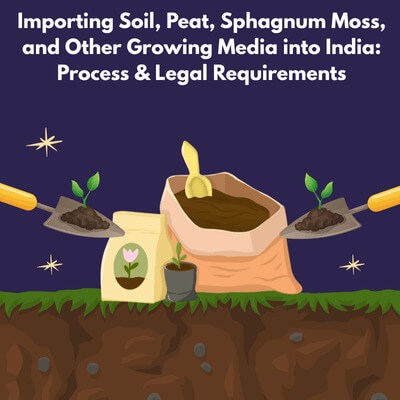
Growing media (or growth substrate) refers to any material—natural or synthetic—that supports plant growth by providing a physical structure for root development and retaining water, nutrients, and air. It is commonly used in potting, propagation, hydroponics, and container gardening.
Unlike natural soil, growing media can be customized for specific plant types or growing environments, making it especially valuable in horticulture, landscaping, and nursery operations.
1. Peat
Peat is a natural, dark brown organic material formed from the partial decomposition of plant matter—mostly mosses and grasses—under wet, acidic, and oxygen-poor conditions. It accumulates slowly in waterlogged areas like bogs over thousands of years. Peat is spongy, lightweight, and rich in carbon, but low in nutrients. In horticulture, peat is widely used for improving soil structure, enhancing moisture retention, and creating sterile growing media for seeds and plants.
2. Soil Peat (or Peat Soil)
Soil peat refers to soil that contains a high proportion of peat material. It typically forms in natural peatlands and is characterized by its dark color, crumbly texture, and high water-holding capacity. Soil peat is commonly used in gardening and greenhouse applications where rich organic content is needed. While it retains moisture well, it may need to be mixed with other materials to balance aeration and drainage for healthy root development.
3. Sphagnum Moss
Sphagnum moss is a type of living moss that grows on the surface of peat bogs. It has a soft, stringy texture and can absorb many times its weight in water, making it extremely useful in horticulture. Unlike peat, which is decomposed, sphagnum moss is harvested in its fresh or dried form and used in potting mixes for orchids, bonsai, and other moisture-loving plants. It also helps in seed germination and air-layering due to its light, sterile, and moisture-retentive nature.
4. Moss (General)
Moss is a general term for a group of small, non-vascular plants that grow in dense green clumps or mats, usually in moist, shaded environments. There are many types of moss, and not all are used in horticulture. While sphagnum is one specific type of moss, others may be used decoratively or for erosion control. Most mosses thrive in humid conditions and do not have roots, absorbing water and nutrients directly through their leaves.
The import of growing media into India is tightly regulated to prevent the introduction of foreign pests and diseases. Materials like soil and peat are considered high-risk and typically require an Import Permit under the Plant Quarantine (Regulation of Import into India) Order, 2003. Proper classification of materials like sphagnum moss, coco peat, and compost is essential to avoid delays, penalties, or rejection at the border.
Importing growing media into India is a regulated process overseen by the Directorate of Plant Protection, Quarantine & Storage (DPPQS) under the Ministry of Agriculture & Farmers Welfare. The goal is to prevent the entry of pests and pathogens that can harm India’s agricultural ecosystem.
To begin, the importer must register on the PQIS portal and fill out Form PQ-02, detailing the nature of the growing media, country of origin, intended use, and port of entry. Along with the form, the applicant must upload relevant documents such as a justification letter (especially if importing soil), Material Safety Data Sheet (MSDS), invoice or purchase order, and certification from the exporting country regarding pest-free status. An application fee, as prescribed by the government, must also be paid online. Once submitted, the application is reviewed by the Plant Protection Adviser (PPA) or a designated officer.
Once the application is approved, an Import Permit (PQ Form-04) is issued. This permit is usually valid for one year from the date of issue.
When the shipment arrives in India, it must include:
At the port of entry, the consignment will be checked by quarantine officers. It go through inspection, sampling, or treatment (like fumigation) if needed.
Importing growing media such as soil, peat, sphagnum moss, and coco peat into India involves more than just logistics—it's about protecting the country’s biodiversity and agricultural health. These materials, while essential for horticulture and research, can pose serious phytosanitary risks if not properly regulated. That’s why the Plant Quarantine (Regulation of Import into India) Order, 2003 requires importers to follow a structured process involving documentation, permits, and inspections. Whether you're a researcher, nursery owner, or commercial grower, understanding the nature of each growing medium, its classification, and the legal requirements is crucial. Always ensure that you register on the PQIS portal, submit accurate documentation, and comply with quarantine protocols. By following these steps carefully, you can avoid regulatory delays, protect the environment, and contribute to safer and more sustainable agricultural practices in India.
Q1. What is the difference between peat and sphagnum moss?
Peat is the decomposed form of sphagnum moss accumulated over centuries in bogs, while sphagnum is the live or freshly harvested plant material.
Q2. Is cocopeat better than soil?
For container gardening and hydroponics, cocopeat often performs better due to its excellent water retention and sterile nature.
Q3. Can I import growing media without a permit in India?
No. Importing soil, peat, or similar materials requires prior permission under Indian quarantine laws.
For more details, please visit Metacorp Agri-licensing





We are the pioneers in offering environmental consulting services to our patrons, giving us the first mover advantage & keeping us ahead of our competitors.
Very experienced in filing, monitoring & submission of CDSCO Compliances, Drugs Manufacturing & sale guidelines, Environmental Impact Assessment, AERB consulting services, Pollution Control Board CTE & CTO Advisory Services, Waste Management Authorization from State Pollution Control Boards, Fertilizers & Insecticides Manufacturing, Wholesale & Import Compliances
